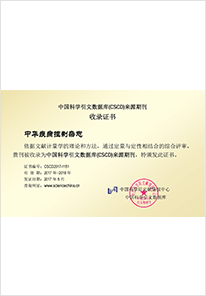2019 Vol. 23, No. 1
Display Method:
2019, 23(1): 1-4.
doi: 10.16462/j.cnki.zhjbkz.2019.01.001
Abstract:
2019, 23(1): 5-9, 28.
doi: 10.16462/j.cnki.zhjbkz.2019.01.002
Abstract:
2019, 23(1): 10-14.
doi: 10.16462/j.cnki.zhjbkz.2019.01.003
Abstract:
2019, 23(1): 15-18.
doi: 10.16462/j.cnki.zhjbkz.2019.01.004
Abstract:
2019, 23(1): 19-23, 49.
doi: 10.16462/j.cnki.zhjbkz.2019.01.005
Abstract:
2019, 23(1): 24-28.
doi: 10.16462/j.cnki.zhjbkz.2019.01.006
Abstract:
2019, 23(1): 29-33, 55.
doi: 10.16462/j.cnki.zhjbkz.2019.01.007
Abstract:
2019, 23(1): 34-38.
doi: 10.13315/j.cnki.cjcep.2019.01.008
Abstract:
Surveillance analysis on influenza-like illness from 2017 to 2018 in the plateau of Qinghai Province
2019, 23(1): 39-44.
doi: 10.16462/j.cnki.zhjbkz.2019.01.009
Abstract:
2019, 23(1): 45-49.
doi: 10.16462/j.cnki.zhjbkz.2019.01.010
Abstract:
2019, 23(1): 56-59, 74.
doi: 10.16462/j.cnki.zhjbkz.2019.01.012
Abstract:
2019, 23(1): 60-64.
doi: 10.16462/j.cnki.zhjbkz.2019.01.013
Abstract:
2019, 23(1): 70-74.
doi: 10.16462/j.cnki.zhjbkz.2019.01.015
Abstract:
2019, 23(1): 75-79.
doi: 10.16462/j.cnki.zhjbkz.2019.01.016
Abstract:
2019, 23(1): 80-84.
doi: 10.16462/j.cnki.zhjbkz.2019.01.017
Abstract:
2019, 23(1): 85-89.
doi: 10.16462/j.cnki.zhjbkz.2019.01.018
Abstract:
2019, 23(1): 106-109.
doi: 10.16462/j.cnki.zhjbkz.2019.01.022
Abstract:
2019, 23(1): 110-113.
doi: 10.16462/j.cnki.zhjbkz.2019.01.023
Abstract:
2019, 23(1): 114-117.
doi: 10.16462/j.cnki.zhjbkz.2019.01.024
Abstract:
2019, 23(1): 118-121.
doi: 10.16462/j.cnki.zhibkz.2019.01.025
Abstract:


 Email alert
Email alert RSS
RSS Abstract
Abstract HTML
HTML PDF
PDF





